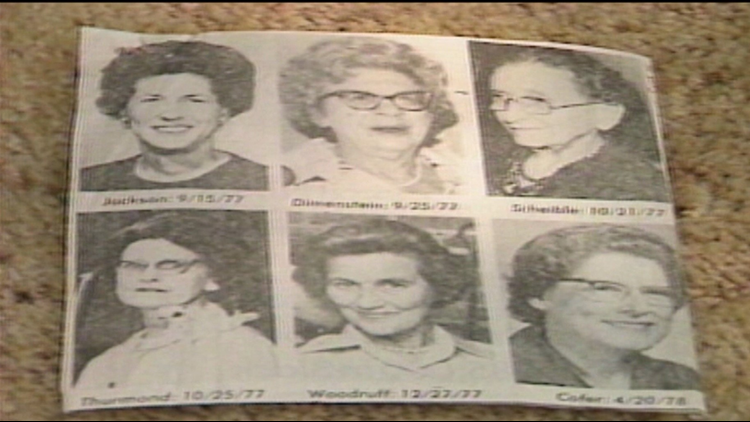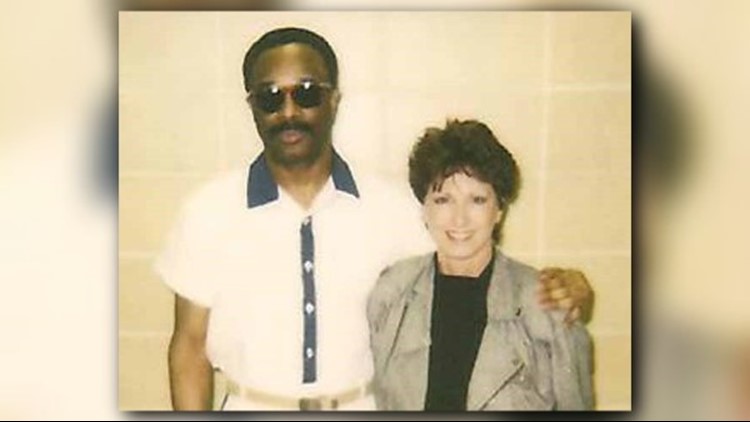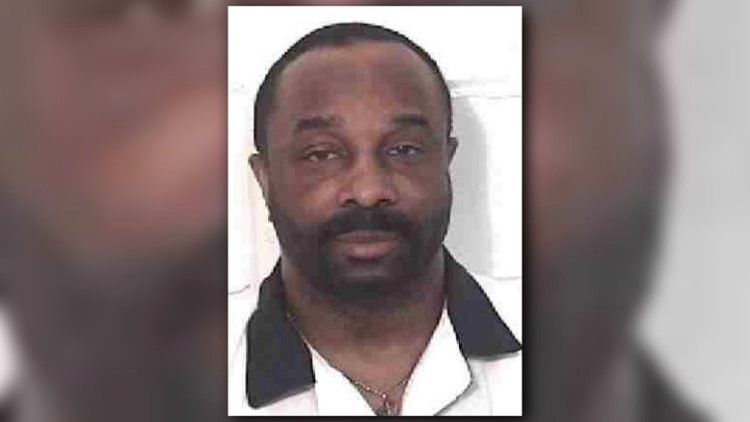JACKSON, Ga. – Leading up to his scheduled execution, Carlton Michael Gary’s attorney has filed an application with Georgia’s State Board of Pardons and Paroles to commute his death sentence, arguing that the evidence against his client does not correlate to the crimes he’s been convicted of.
While the prosecution argued that Gary raped nine elderly women and killed seven of them in Columbus, Ga. between 1977-78, he was convicted in 1986 of raping and strangling just three—and the jury voted to sentence him to death.
Now, the 67-year-old death row inmate is slated to receive the state’s 49th lethal injection for the rapes and murders of Florence Scheible, Martha Thurmond and Kathleen Woodruff, on March 15 at the Georgia Diagnostic and Classification Prison in Jackson at 7 p.m.
Gary, known as the infamous “Stocking Strangler,” has exhausted all his appeals for a new trial.
But his attorney, John Martin, says there is far too much doubt to conclude guilt to the point of a death sentence for his client.
“The total package of newly discovered evidence undermining the State’s theory of prosecution which creates the probability that the jury would have at least had a reasonable doubt, sufficient to cause at least one juror not to vote for death,” Martin, of the Martin Brothers law firm in Atlanta, contended in the legal document filed with the board on March 7.
“Here, there is just too much doubt about Mr. Gary’s guilt not known at the time of his trial to countenance his execution. We are not talking about questionable recanting witnesses who came forward long after trail, but hard physical evidence of innocence.”


Over the course of six months, between 1977-78, evil had a stranglehold on the affluent Wynnton neighborhood in Columbus, Ga.
Women, between the ages of 55-89, became the target of nine rapes and seven strangulation deaths—sparking fear and sense of terror in the prosperous suburb.
- Sept. 11, 1977 | Gertrude Miller
- Sept. 16, 1977 | Mary "Fern" Willis Jackson, 59
- Sept. 16, 1977 | Jean Dimenstein, 71
- Oct. 21, 1977 | Florence Sheible, 89
- Oct. 25, 1977 | Martha Thurmond, 70
- Dec. 28, 1977 | Kathleen Woodruff, 74
- Feb. 11, 1978 | Ruth Schwob,
- Feb. 12, 1978 | Mildred Borom, 78
- April 20, 1978 | Janet Cofer, 61
According to the United States District Court, Miller was raped and severely beaten. Knotted stockings were found at the scene. She survived the attack and identified Gary as the man who attacked her in September 1977.
Similarly, Jackson had been beaten, raped and strangled to death with a stocking and a sash from a dressing gown just five days later.
Dimenstein was raped and strangled to death with a stocking in her home the same day as Jackson—her body was covered with sheets and a pillow.
Schieble was legally blind and could walk only with the aid of a walker. Her son and his wife found her lifeless, covered body in October.
Thurmond was found covered by a pillow, blankets and sheets. She had been sexually assaulted, beaten and strangled with a stocking.
Woodruff was discovered, partially covered and lying on her bed. She had been raped and strangled with a scarf on Dec. 28, 1977.
Police found Schwob sitting on the edge of her bed with a stocking tied around her neck. While she survived the attack, she never identified Gary as her assailant.
One day after Schwob was found brutally attacked inside her home, Borom was discovered lying in a hallway of her home. She was on her back, her face covered. She had been strangled with a window blind cord and raped.
Cofer’s body was found in her bed covered with linen, and a pillow over her face. The attacker left a bite mark on her left breast. She too had been raped and strangled with a stocking. Cofer was the only victim who did not reside in Wynnton. However, attended choir practice at the Wynnton Methodist Church the night of her murder.
The parallels in each case made prosecutors believe this was the work of a serial rapist and serial killer.
According to the United States District Court, each of the women lived alone and the intruder sexually assaulted them and left behind pantyhose used for strangling them. All but one of the invasions happened at night.
Dubbed as the "Stocking Strangler" he eluded capture for the next six years.
Known as the “Steakhouse Bandit” for several robberies in South Carolina, Gary was arrested in 1984, when a pistol that was stolen from a home in the Wynnton area in October 1977 was linked to him. Prints from the crime scenes also connected him to the murders.
“Gary’s fingerprints were ultimately found to match the latent prints found at four of the crime scenes. Blood evidence and hair samples taken from the crime scenes were inconclusive—they did not establish Gary as the perpetrator, nor did they exclude Gary,” according to the United States District Court.
He was convicted and sentenced to death for three of the murders, rapes and burglaries. No one was ever convicted in the other rapes or stranglings that occurred in the same timeframe.
PHOTOS | On death row: Carlton Gary, the 'Stocking Strangler'
Pleading his own innocence, begging for mercy
On Dec. 14, 2017, Gary wrote 11Alive’s Jessica Noll a 12-page letter that counters the evidence pointing the finger at him.
In the letter, he highlighted fingerprints that police produced with no photographs showing where they were found—shoe prints that don’t fit him—and a bite mark on a victim that doesn’t match his teeth. He also challenged missing DNA evidence and eyewitnesses who came forward, placing him in the neighborhood during the murders.
“I was a model on TV…yet nobody identified me. Then years later, after arrest, after being plastered all over the media, liars popped up and said they saw me in the area of one crime scene.”
He also claimed no latent fingerprints were ever developed.
“Not one print was photographed ‘in situ’ (being lifted from a particular spot) to authenticate it, as was protocol.”
Gary argued that the footprints collected at the Schwob residence were size 10—but he is a size 13 ½.
According to him, he has attempted to get his hands on the evidence that convicted him, but to no avail.
“I have always requested any and all evidence, exculpatory and inculpatory. I have always sought funds for experts to assist testing and relevant investigative. The state opposed any and all assistance for me,” he wrote in the letter.
“Even after the GA Supreme Court ordered DNA testing, Slater and her henchmen opposed each request. WHY??!! Why would the devils so very boisterously claim they have the right man, so adamantly opposed such requests??”
“The swabs containing my DNA suddenly came up ‘missing’ from the sample envelopes.”
After 31 years in prison, in December 2009, the Georgia Supreme Court halted his execution, after DNA found at the scene proved that one of the three murders he was convicted of was not his. And in 2010, DNA tests excluded Gary from being the person who raped Thurmond.
“The DNA absolutely, to a scientific certainty, excludes Mr. Gary as her rapist,” Martin said in an interview with 11Alive at that time.
A separate DNA test did put Gary at the home of another woman who was raped and killed in Columbus in 1977, but he was never tried for that murder.
But in September 2017, the trial court denied Gary’s motion for new trial. His appeal to the Georgia Supreme Court was denied in December, and his motion for reconsideration was ultimately denied in January 2018—exhausting all his appeals for a new trial or to consider new evidence.
Now, his application for commutation of his death sentence is the only hope he has left.
The application echoes many of the same contentions made by Gary, including the DNA evidence, shoe prints and fingerprints, but also points out discrepancies with a bite mark left on one of the victims—as well as combating the recollection of a surviving witness.
“There is a host of physical evidence not available at the time of trail, either because the defense was denied expert assistance to challenge the State’s expert testimony, the type of testing now available did not exist at the time of trail or because the evidence was not disclosed to the defense at the time of the trial, which raise serious doubts to Mr. Gary’s guilt, much less lingering doubt as to a death sentence.”
According to the filed application for commutation, Gary’s attorneys argue that Miller’s identification was skewed since it was made seven years after the attack occurred—and only recognized him because he was on TV with police after being arrested.
The application states that prosecutor, William Smith, later conceded that it was a “troubling identification process fraught with the possibility of misidentification.”
However, during his closing arguments, Smith told the jury that it was “burned into [Miller’s] memory; it’s forged into her memory; she can’t put it out of her mind if she wants to.”
After the trial and during the state habeas corpus proceedings, the police report was disclosed to the defense. Miller’s original statement said that she was asleep at the time of the attack and that there were no lights on in her bedroom—furthermore, she told police that she “would not be able to identify the subject and was not able to describe him”
Cofer was left with a mark on her left breast, thought to be a bite mark from the assailant.
Dr. Kenneth Galbreath, a Columbus-based dentist, was elicited to make impressions of the bite mark prior to Gary’s trial.
Dr. Thomas David, a forensic odontology expert and consultant with the GBI, told the prosecution his opinion was that the impression was “sufficiently distinctive” and could be attributed to Gary. However, when asked if the impression could exclude Gary, he said that there was a possibility that it would exclude him.
According to the defense, the prosecution did not disclose this information to them for the trial.
On Nov. 9, 2005, the bite mark mold was found in the bottom of a filing cabinet at the Muscogee County coroner’s office.
With that, David made an impression of Gary’s teeth to compare the two. His opinion was that the person who bit Cofer had a gap in their upper front teeth and a crooked lower tooth. That did not match Gary’s mold.
The attorneys also argue against Gary’s statement allegedly given to Columbus Police detectives in 1984.
Gary denies that he ever admitted to the crimes, as police have stated. But his alleged admission was not recorded, nor was it documented in a signed statement.
If the jury, at the time of his trial, had known about the evidence and that it “so powerfully excluded” Gary as the offender, the jurors would likely have had reasonable doubt, the defense said.
“Simply put, this evidence shows that the State’s theory that Mr. Gary was a serial killer who had committed seven different rape/murders was not in fact true,” the defense stated in the application.
“These are the types of circumstances that call for the commutation of Mr. Gary’s sentence of death. Due to the fact of our all too error prone judicial system, the power of this Board to commute a death sentence is the failsafe to insure that we do not impose the ultimate and irreversible penalty of death when serious doubt exists as to guilt.”
The defense concluded, “There is nothing more terrifying and horrible than for the State to take the life of an actually innocent citizen and this Board stands as a bulwark against that calamity.”
The board will meet on Thursday, March 14 at 9 a.m., the day before Gary’s execution, to consider clemency. The parole board has the ability to grant clemency and commute his death sentence or reduce his sentence to life in prison.
After the meeting, the board may issue a stay of execution for 90 days or deny clemency altogether.
If his sentence proceeds, he will be the first death row inmate in Georgia to die by execution in 2018.


















